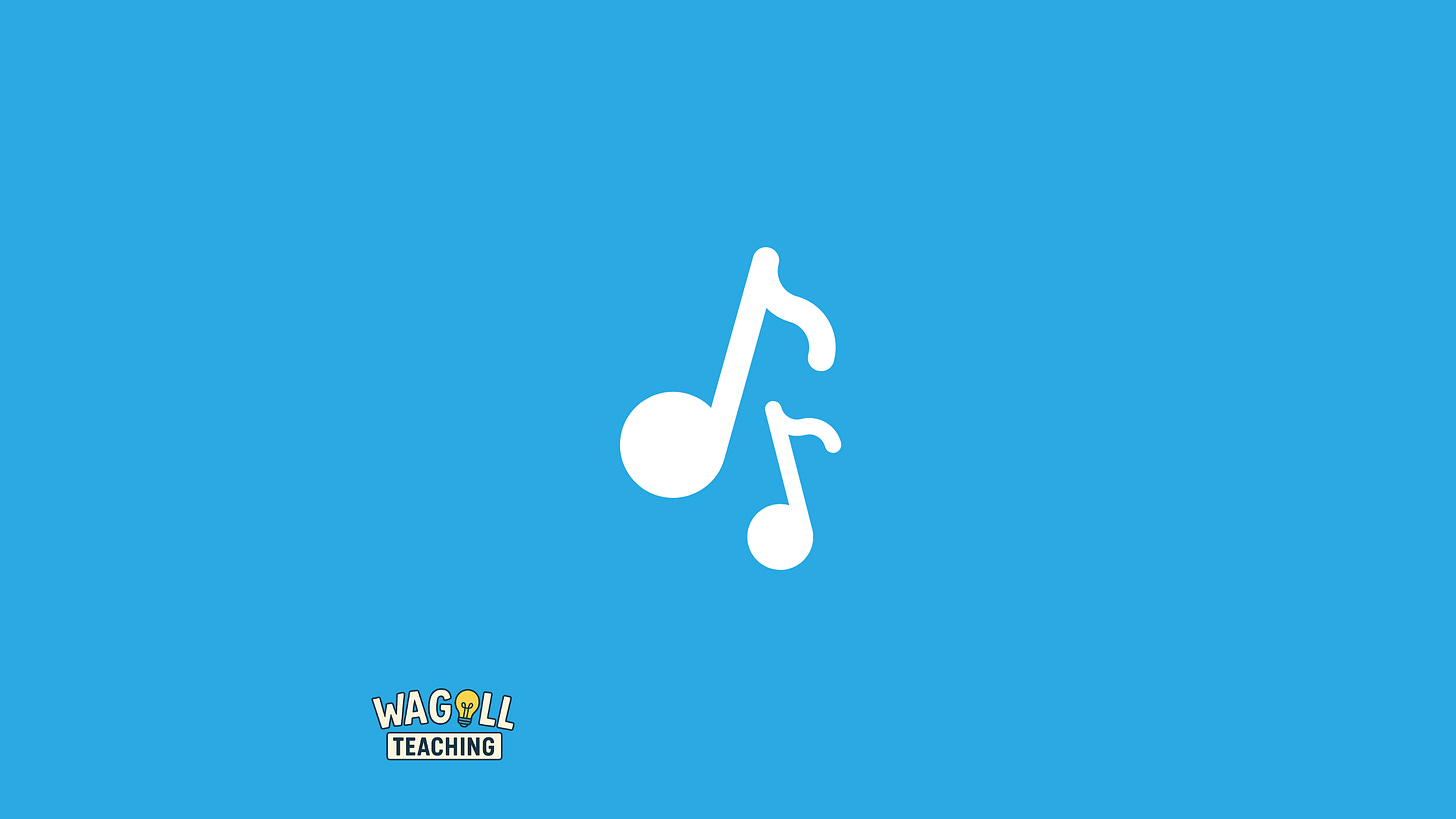⭐The Power of Singing: A Primary Classroom Hack
How singing in class boosts memory, language, and connection
💡 The Big Idea
Some learning experiences can’t be bottled into objectives or worksheets. Singing songs, launching water rockets, holding ice as it melts are all the rich, sensory moments that stick. They form the schema of experience, and for younger children especially, they’re a vital part of learning.
👀 A Closer Look
Have you seen the videos of Mr Partridge, who took the internet and then the Glastonbury festival by storm? Mr Partridge is a music teacher who went viral with his top 10 Primary school ‘bangers’. Watched over 3 million times on TikTok, he performed at Glastonbury to a crowd of adults joyfully singing along to the songs they used to sing in their own Primary schools up and down the country in the 80s and 90s. Engrained in culture, what we witnessed was on mass retrieval practice.
In the world of cognitive science and codifying lessons, there is a danger that we lose some of the elements of primary school that make primary, primary. The experiences, the playfulness and moments that make primary education joyful and enriching. Episodic memory is equally as important as semantic memory. The ‘I remember in Year 3 when we…’ moments.
🎵 Why Our Brains Love Songs
Songs are an example of this. But songs aren’t just fun, they’re another cognition hack. When we sing with children, we’re tapping into a bundle of cognitive tools that help knowledge stick, language grow, and attention sharpen.
🧠 Songs organise knowledge.
The brain loves patterns. Verses, choruses, rhyme, repetition. These all help children chunk and sequence ideas. Songs are naturally structured for learning. Just like gestures and task design that I have written a lot about recently, songs help organise knowledge into memorable units.
👂 Songs demand attention.
Music captures focus and demands attention. Kang & Williamson (2013) suggest that songs help direct children’s attention to the material being learned. They create a multisensory experience, combining sound, rhythm, movement and often visual cues (actions and gestures), forming a stronger, more elaborate memory trace than words alone.
👅 Songs support language acquisition.
New words are easier to learn when they’re repeated rhythmically. Melodies help hold sentence structures in place. Music and rhythm act as a scaffold for the acquisition of vocabulary. For EAL learners and early readers, this rhythm makes spoken language more accessible and easier to imitate.
In a 2014 study, Good et al. found that pairing Mandarin vocabulary with sung phrases significantly improved recall for students learning the language, especially those unfamiliar with tonal patterns. The melody acted as an “environmental cue,” helping learners store and retrieve the words more effectively.
💃 Songs become embodied learning.
Hostetter (2011) conducted a meta-analysis showing that gestures significantly support cognitive processing, especially when children are encoding new information. When paired with gestures or movement, songs help children connect words to physical actions and meaning. The learning is brought back out into the environment (External Memory Field), performed, and remembered through the body.
🫶 Songs build connection.
There is a social, developmental aspect to this too. Singing together decentralises the child’s ego. It shifts focus away from solo performance and towards a shared classroom experience. Singing is social, communal, and joyfully inclusive. When experiences like these draw on human social interaction, memory is enhanced too.
👉 Immordino-Yang and Damasio (2007) argued that emotion and social connection are not extras to learning; they are biologically intertwined with how memory forms. When children learn in emotionally resonant, socially rich contexts (like singing together), the learning is more durable and meaningful.
Just refer back to Mr Partridge’s Glastonbury performance before trying to prove me wrong. How many of those attendees would have recalled all those songs on their own in the car on the way to Glastonbury? And how many of those words came flooding back when surrounded by others, all seeking the same connection?
🧪 Songs That Teach: Linking Singing to Curriculum Learning
To be clear, I am not necessarily talking about the traditional assembly songs or end-of-year performances (although these still have value). Singing in class can be directly linked to subject knowledge. There are songs about volcanoes, life cycles, the Romans, place value, the water cycle, and even SPaG rules. These can all help children encode tricky vocabulary and concepts through rhythm and melody.
🎶 How to Teach a Song Step by Step
So songs are important, but so many teachers are reluctant to sing in class because of their own lack of confidence. Here's how to teach a song with your class…
🌟 This next part is just for WAGOLL+ subscribers!
Get practical, step-by-step guidance on teaching songs in your classroom — plus a curated list of UK-based resources and a ready-to-use prompt for creating your own topic-based songs using ChatGPT.
Keep reading with a 7-day free trial
Subscribe to WAGOLL Teaching to keep reading this post and get 7 days of free access to the full post archives.







